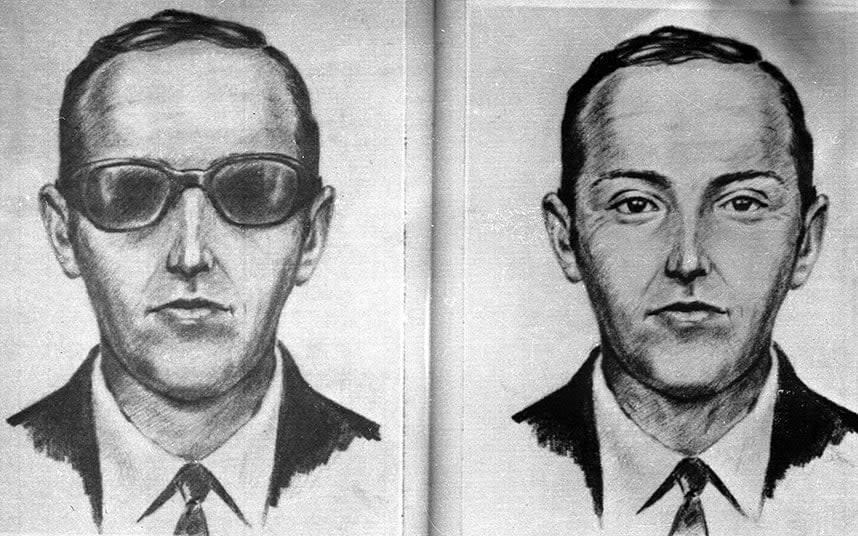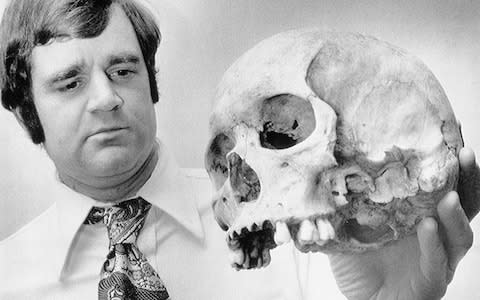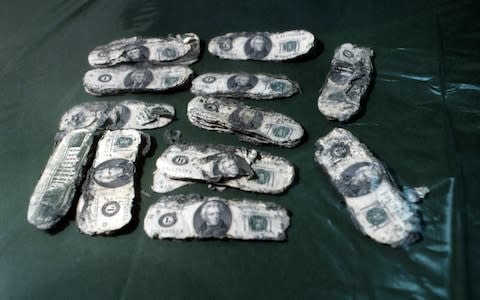The incredible tale of DB Cooper and the most fascinating hijacking case in history

It is said DB Cooper lit a cigarette and ordered a bourbon and soda before revealing the bomb in his briefcase with which he threatened to blow up Northwest Orient Airlines Flight 305, en route from Portland to Seattle.
It is November 24, 1971 - 47 years ago to the day - and Cooper, smartly dressed in a dark suit with a pressed, white shirt, black tie and mother of pearl tie pin, is in seat 18C on the Boeing 727.
After alerting a member of the cabin crew to his intentions to hijack the plane, he explained his demands: $200,000 (about $1.2m in today’s money) in “negotiable American currency”, four parachutes (two primary and two reserve), and a fuel truck stood by in Seattle.
That Cooper hijacked a plane is not so extraordinary - especially in the Seventies when aviation security was nothing compared to today - but what followed is indeed unmatched in travel and criminal folklore.
Bear in mind, this man has never been caught. The case was never solved. The FBI officially called time on the investigation in 2016, prompting a number of amateur investigators - dubbed Cooperites - to take up the cause. And as recently as this month, one man, who wants to remain anonymous, claims to have solved the mystery, though he would not be the first.

Anyway, where were we? So, the pilot phones in Cooper’s demands to Seattle, which are duly agreed by the authorities. Northwest Orient’s president, Donald Nyrop, authorises the payments and instructs all cabin crew to cooperate fully with Cooper. It is worth noting at this point that DB Cooper is not the man’s real name. He purchased his ticket under the name Dan Cooper, but due to a peculiar miscommunication, the media christened him DB Cooper, and DB Cooper he has remained since.
At Seattle, Cooper is handed the 10,000 unmarked $20 bills (the FBI had made a microfilm photograph of each of them) and the parachutes. He rejects military-issue chutes in favour of civilian ones, operated by a ripcord. Once satisfied, Cooper allows all passengers and staff but the pilot and copilot, a flight engineer and flight attendant to leave, and outlines his plan.
If you hadn’t guessed already, Cooper wanted to parachute from the aircraft to escape.
The smartly dressed man, described by flight attendant Tina Mucklow as “rather nice” and “thoughtful and calm” begins his negotiations with the flight crew. He wants the aircraft to fly southeast towards Mexico City as slow and low as possible without stalling (he says maximum 10,000 feet; planes normally cruise at around 36,000 feet). He asks for the landing gear to stay down, the wing flaps to be at 15 degrees and the cabin to remain unpressurised.

After some debate, Cooper agrees to change his intended destinations to Reno, Nevada, as the flight would not reach Mexico City under such flying conditions. Another sticking point - Cooper wants the rear door left open and the steps lowered but Northwest say it is not safe to take-off with it extended. The hijacker disagrees but acquiesces. He will lower it himself once in the air.
The flight takes off two hours later with the five on-board. Two fighter jets follow the 727, one above, one below, so Cooper can’t spot them.
Once in the air, Cooper tells Mucklow to join the crew in the cockpit and remain there with the door closed. At 8pm, 20 minutes into the flight, a warning light on the control panel indicates that the rear steps have been lowered. Shortly afterwards the crew notices a change in the air pressure, suggesting the back door is open. At 8.13pm, the aircraft experiences a wobble from the back, forcing the pilots to readjust the plane's balance. Two hours later yet, the plane lands at Reno Airport. Surrounded by state troopers, sheriff’s deputies and the FBI, the crew disembark but there is no sign of Cooper.
What follows is a man-hunt of immense proportions, including door-to-door searches, a replication of the flight, during which FBI officers push out of the aircraft a 90kg sled to simulate Cooper’s jump, and a widespread aerial search. Though the estimated location of Cooper’s jump was thought to be near Lake Merwin, Washington, no trace of him was ever found.
The FBI first thought Cooper did not survive the jump. “We originally thought Cooper was an experienced jumper, perhaps even a paratrooper,” said FBI special agent Larry Carr, leader of the investigation from 2006 until its end. “We concluded after a few years this was simply not true. No experienced parachutist would have jumped in the pitch-black night, in the rain, with a 200 mile-an-hour wind in his face, wearing loafers and a trench coat. It was simply too risky.”
The only evidence the FBI had was the tie-clip Cooper left on the aircraft, 66 fingerprints and the two parachutes Cooper had left on the flight (incidentally, the superior chutes given to him. He had, in fact, taken a dummy reserve chute included in the bargain by mistake).
In 1980 an eight-year-old boy found three packets of the ransom cash in the sandy riverbank of Columbia River, downstream from Vancouver. The FBI confirmed it was Cooper’s money - two packets of 100 bills and a third of 90. No more of the ransom money has ever been found, despite the serial numbers remaining online for public search.
Though the case was closed by the FBI in 2016, last year the agency agreed to consider “an odd piece of buried foam” believed to be part of Cooper’s parachute. Found in a mound of dirt in the deep Pacific Northwest mountains, it somewhat rekindled the fascination in the case, though we have not heard a whisper from the FBI since. There is not enough room here to describe the various theories and conspiracies that encircle the mystery, including the most recent, but it seems that Cooper, whoever he is, could still be on the run.
The year after Cooper’s hijacking, 1972, some 15 people attempted to copy Cooper’s scheme. None were successful and all were caught.

